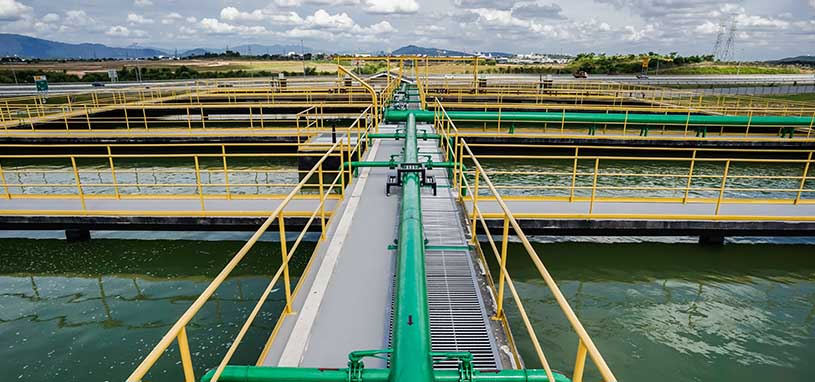How to repair and maintain a sewerage pump stations
Breakdowns at a sewerage pump station are bad news for a number of reasons. Firstly, they can lead to environmental incidents due to the build-up of sewerage and potential overflows. Secondly, the pressure of a breakdown situation often results in a higher injury rate to workers than routine maintenance tasks. And, thirdly, the costs of a breakdown repair are far higher than preventative and routine maintenance tasks.
Regular maintenance of sewerage pump stations is essential, but what does this involve and where do you begin?
Contact Cleanawater about sewerage pump station maintenance for expert advice.
The importance of sewerage pump station maintenance
Sewerage pump stations process very dirty streams. Solid waste can block the system causing flow problems and damage to the pumps. In addition, pump seals and packing are subjected to harsh conditions. Premature seal failure may lead to leaks, which result in odour complaints.
Sludge accumulation in a sewerage pump station can also cause level switches to become inoperable. This could cause a pump to keep running when it should switch off, which is dangerous. When the level drops too low, the pump operates outside of its design conditions causing cavitation and vibration. The pump will also overheat. All these conditions will accelerate pump failure.

What tasks should you include in a maintenance schedule?
Sewerage pumps should be removed from a pump station on a regular basis (approximately every 1,000 hours). The pump must be electrically isolated before removing it. Use only tracks and chains made for the purpose of removing pumps. Failure to do this could lead to serious injuries. Once the pump is removed, various tasks can be carried out on the chamber and associated piping, while other tasks are carried out on the pump.
Suck the sludge out of the pump station chamber. Wash down the walls at the same time to ensure all the debris is removed from the system. Flush out suction lines and all inline and non-return valves. Once the chamber is clean, check the operation of level switches and inspect piping and chamber walls for cracks or signs of corrosion.
Checking the performance of sewerage pumps should be carried out by a maintenance professional. These are some basic tasks that should be included in the schedule:
-
Check the condition of the lubricating oil. Water in the oil indicates a seal leak, which may require more in-depth maintenance activity. Also check the oil level and top up if necessary.
-
Open the motor housing inspection port. Large amounts of water indicate a leak, while the presence of oil indicates a seal failure. Take appropriate action based on your observations.
-
Check the clearance between the knife and the cutting disk. This clearance may become too big due to wear. Adjust the clearance to within the design specifications.
-
Check pump components like impeller condition, stuffing box, shafts, sleeves, wear rings or plates. Pitting on the impeller could indicate cavitation problems, which should be investigated and resolved.
Most sewerage pump stations have similar maintenance schedule requirements. Things that may differ are the frequency of intervention due to the larger volumes of sewerage passing through the system. Larger systems may also have more complex control systems and dual switching pumps and therefore have extra checks to be carried out.

Basic troubleshooting for sewerage pump stations
Operation of a sewerage pump station may be interrupted by minor or major faults. Here are some tips for doing basic troubleshooting on sewerage pump stations.
| Symptom | Possible Cause |
|---|---|
|
Pump won’t start |
Problem with electrical connections or mains switch. Broken level switch. Blockage in pump impeller. |
|
Pump won’t stop |
Broken level switch. |
|
Pump keeps switching on and off |
Motor power supply faulty. Level switches faulty. Pump overload kicking in due to blockage in the system. |
|
Motor current too high |
Motor power supply faulty. Blockage in system or sewerage too thick to pump. |
|
Low flow |
Blockage in discharge line. Pump failure. |
|
High level alarm |
Faulty level switches. Flow of sewerage is above design. Pump failure. |
Contact Cleanawater for expert advice
Cleanawater has more than 20-years experience in wastewater treatment in the Australian context. We supply and install sewerage pump stations and also offer maintenance services. Our technical experts give you peace of mind about the performance and maintenance of your sewerage pump station. We keep you compliant with regulations and help you minimise your impact on the community.
Contact our expert team on 1800 353 788 today to arrange a consultation for your sewerage pump station maintenance.
Must Read
VapourGard: Your ultimate odour control solution
Control odours effectively and safely with CleanaWater's VapourGard system. Ideal for industries such as mining, landfill operations, recycling, and more, the VapourGard system uses lightweight partic ...
Read moreControl Odour with VapourGard
Control odours effectively and safely with CleanaWater's VapourGard system. Ideal for industries such as mining, landfill operations, recycling, and more, the VapourGard system uses lightweight partic ...
Read more